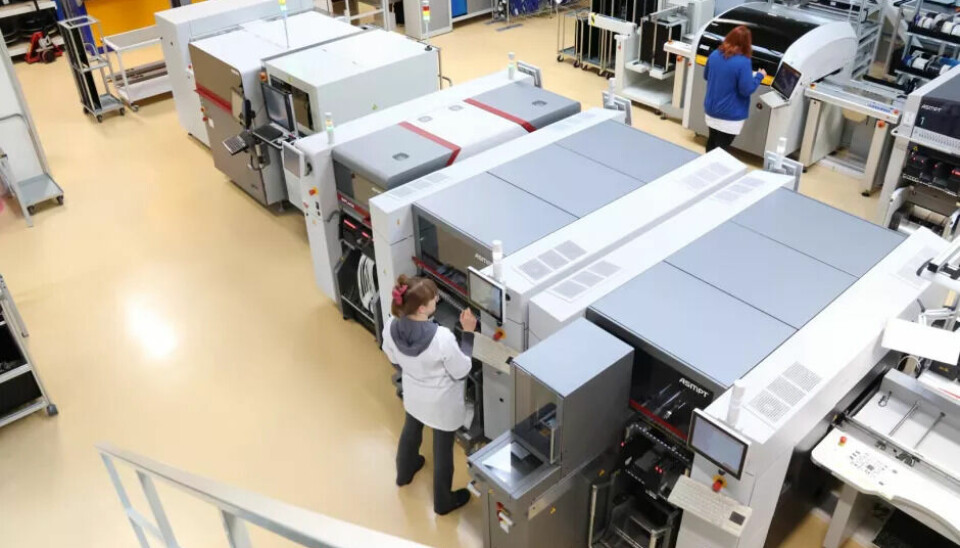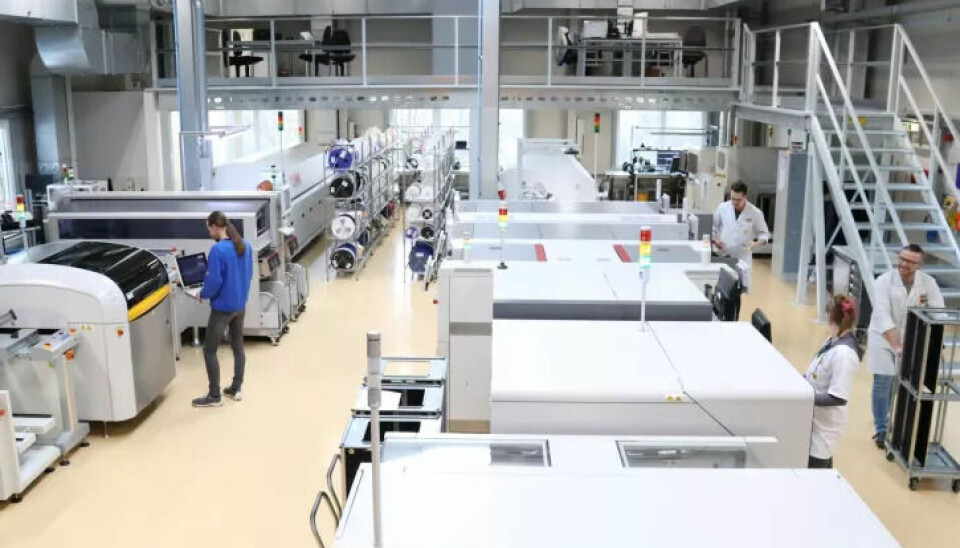Scalable SMD production for modular OEM sensors
Micas revolutionises sensor production with ASMPT

Discover how Micas enhances global manufacturing efficiency with cutting-edge technology and reduced setup times.
The range of Micas extends from controls for design spouts and washbasin fittings to sensor solutions for gesture-based interactions in sanitary equipment. The products are manufactured both under their own name and on an OEM basis for brand manufacturers and are delivered worldwide - including to China and Australia.
The company was founded in 2000 and is now internationally active in the development and production of customised OEM sensor solutions. In addition to in-house developments, Micas also sees itself as an EMS service provider with a short response time to specific customer requirements. According to Matthias Weber, Head of Operations, this demand for flexibility was a key reason for the decision in favour of ASMPT's Siplace placement systems.
“We manufacture sophisticated technology, for example for design wall spouts, washbasin fittings or intelligent bathrooms with gesture control and motion detectors for well-known brands - as our own products or on a contract basis,” explains Katja Hillenbrand, CEO of Micas. “In this way, quality from Germany is increasingly finding its way around the world - including to China and Australia. For us, a very pleasing development.”
Automated solder paste printing
On the shop floor at Micas, a range of machinery is used that meets the current requirements for industrial electronics manufacturing. At the start of the line, a DEK TQ L solder paste printer processes circuit boards up to a size of 600 × 510 mm. The wet print accuracy is ± 17.0 µm @ 2 cpk. The three-stage transport system, the integrated NuMotion control based on fibre optic cables, and shortened cleaning cycles enable a core cycle time of 6.5 seconds. In addition, the DEK VectorGuard frame system for stencils is used, which has already been established in various applications.
The printer platform serves as a stable base for subsequent assembly with Siplace systems. A Siplace TX is used in the production line, among other things. The system offers a space-saving setup with a footprint of 1 m × 2.23 m and achieves a nominal placement performance of up to 96,000 cph. The integrated vision system checks each component individually with customised lighting.
Two Siplace SX placement machines extend the line for processing large and complex components. The Odd Shape Component Package (OSC) also supports heavy or non-standardised components. The feed is via the Siplace Waffle Pack Changer, whose non-stop module allows the change of carriers during operation. For inspection, a high-resolution camera captures two offset images per component and generates a 3D model from them. This allows bent or damaged pins to be reliably identified.

The placement platforms are equipped with various Siplace placement heads: the CP20 for fast collect-and-place operation, the flexible CPP with three operating modes, and the twin head for large and heavy components. The maintenance of these modules is carried out internally at micas AG. The necessary know-how was imparted through training by the manufacturer. With the current configuration, the line achieves a placement performance of up to 200,000 components per hour. This throughput required an expansion of the reflow capacity - including the integration of a longer reflow oven.
Offline programming minimises downtime
To avoid interruptions in ongoing operations, the company uses change tables in the pre-assembly area and the Works Programming software from ASMPT for offline creation and validation of placement programs. The data is taken directly from the CAD system and the entire placement is simulated in advance. The printing programs for solder paste printing are also created offline, centrally managed, and automatically transferred to the line. According to Michael May, head of PCB assembly, this reduces the setup effort by about 30 minutes per process.
To optimise the material flow, Micas replaced the shelving warehouse with a compact carousel system. As many customers provide material, goods receipt recording, including quantity determination, is carried out directly via an X-ray counter. This allows the material inventory to be continuously traced.
Inventory management and tracing

The management of component inventories at Micas is carried out using the Factory Material Manager from ASMPT. Each material batch receives a unique identifier (UID) upon receipt, which is linked to relevant information such as manufacturer, batch number, delivery date, or moisture sensitivity (MSD). This allows the material flow to be seamlessly traced. Based on production requirements, the software creates picking lists for pre-assembly or complete material retrieval for small series. Replenishment processes are carried out as needed, following the FiFo principle - even in complex storage structures. “Integration into our existing processes is challenging, as we cannot scale personnel arbitrarily,” explains Katja Hillenbrand. “However, the support from the ASMPT team was very helpful.”
System partnership in the SME sector
The collaboration with ASMPT at micas AG includes not only the provision of hardware and software but also accompanying services such as needs analysis, consulting, installation, commissioning, and training for the internal maintenance team.
“Close coordination with the equipment supplier enables us to efficiently implement our manufacturing processes - even under the conditions of a medium-sized company in Germany,” explains Katja Hillenbrand.
ASMPT: productronica 2025: Hall A3, Stand 377